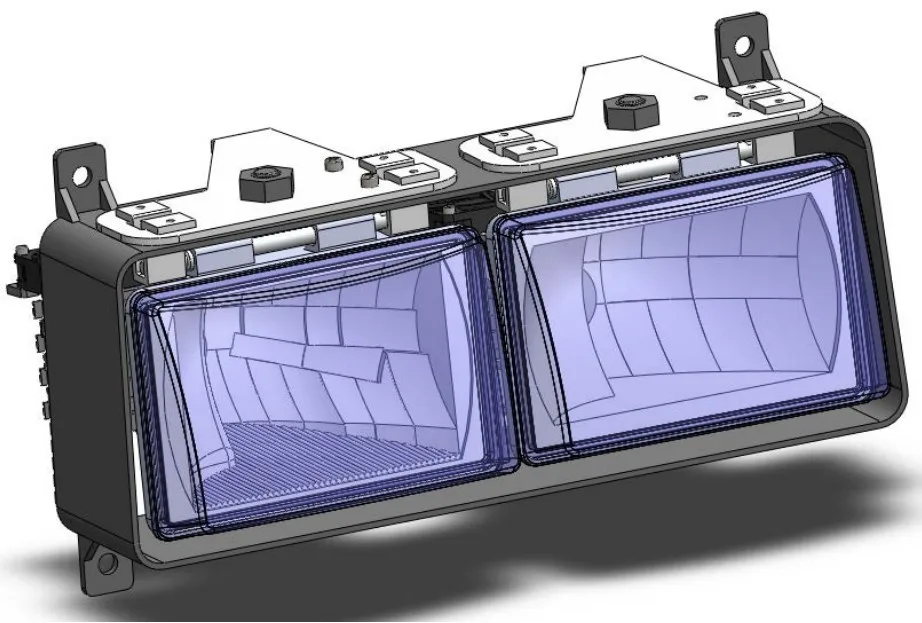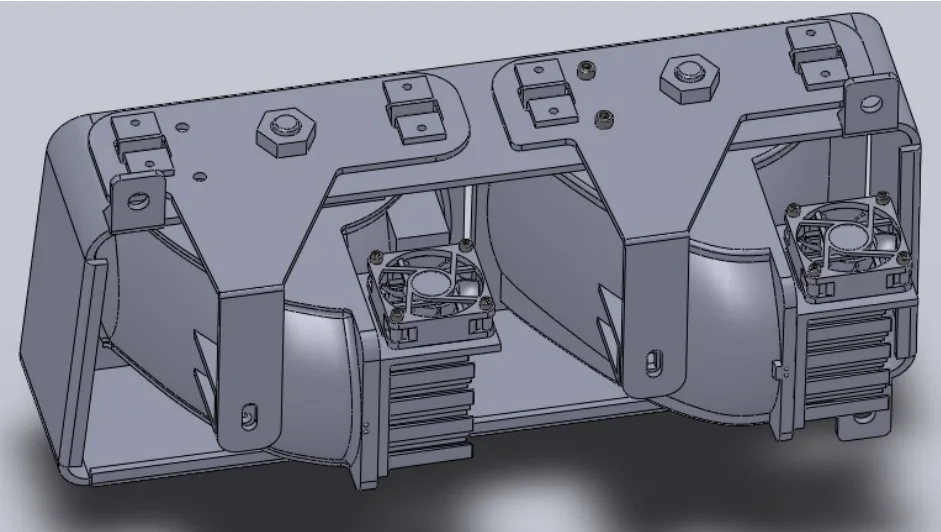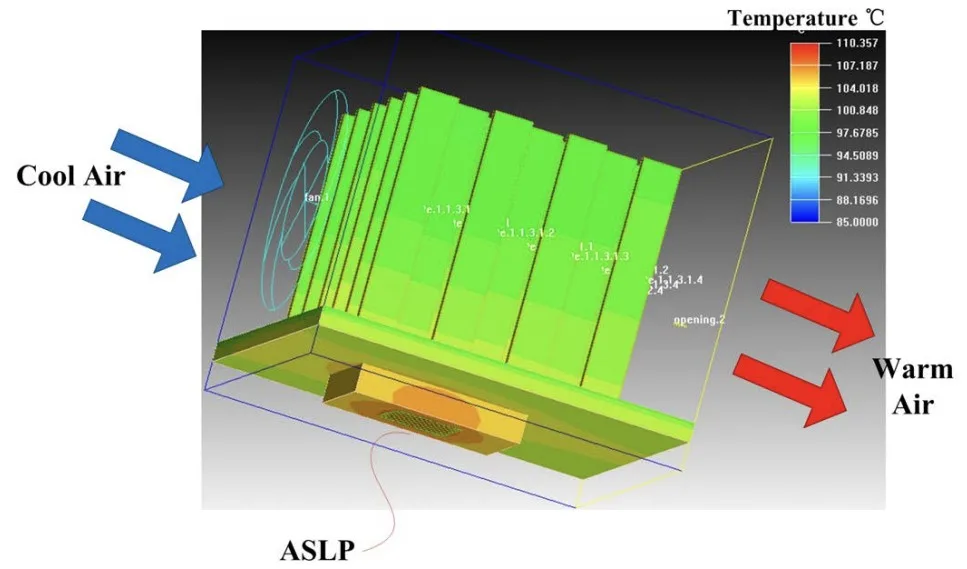This article introduces the paper "Application Specific LED Packaging for Automotive Forward-lighting Application and Design of Whole Lamp Module".
1. Overview:
- Title: Application Specific LED Packaging for Automotive Forward-lighting Application and Design of Whole Lamp Module
- Authors: Fei Chen, Kai Wang, Zhangming Mao, Xing Fu, Cao Li, Mengxiong Zhao, and Sheng Liu
- Year of Publication: 2012
- Journal/Conference: IEEE (Specific journal not specified in provided text)
- Keywords: None explicitly listed in the provided text.
2. Research Background:
The automotive industry is increasingly adopting LEDs for headlights, driven by advantages such as reliability, energy efficiency, compactness, durability, environmental friendliness, and longevity [1]. However, conventional LED packaging differs significantly from halogen or HID lamps in optical and thermal characteristics, posing challenges for direct application in forward-lighting. A study highlights the significant role of illumination quality in night-time driving safety, noting a 44% accident rate [2]. Strict regulations (ECE, SAE, GB) govern low-beam illumination patterns to ensure adequate visibility and prevent glare [3-5]. While previous research has explored high-efficiency non-imaging optics for LED headlights [6], complexities in lens design and manufacturing remained a hurdle [7, 8]. Other approaches using optical fibers and DMDs for light control have also been investigated [9, 10], but these methods often present cost and manufacturing challenges.
3. Research Objectives and Questions:
- Research Objective: To design application-specific LED packaging (ASLP) optimized for automotive forward-lighting and to develop a complete headlamp module compliant with ECE and GB regulations while maintaining low cost.
- Key Research Questions: What are the optical and thermal requirements for automotive forward-lighting LEDs? How can an ASLP be designed to meet these requirements? How can a complete headlamp module be designed incorporating an efficient cooling system and optical system based on the ASLP?
- Research Hypothesis: An ASLP designed with optimized structural parameters and appropriate materials will exhibit a small etendue, high luminance, sharp cut-off, and low thermal resistance when combined with an effective cooling system.
4. Methodology:
- Research Design: A mixed-methods approach combining theoretical analysis and experimental validation. The study began with theoretical analysis to define optical and thermal requirements for automotive forward-lighting. This informed the design of the ASLP, followed by fabrication and testing of several samples. Based on these results, an optical system with a novel freeform multi-reflector and an efficient cooling system were designed and incorporated into a complete headlamp module.
- Data Collection Methods: Theoretical analysis, ASLP sample fabrication and testing, simulation (optical and thermal), headlamp module performance testing.
- Analysis Methods: Optical simulation, thermal simulation, statistical analysis.
- Subjects and Scope: ASLP design and performance evaluation; complete headlamp module design and simulation.
5. Main Findings:
- Key Findings: The optimized ASLP achieved a luminous flux of 1100 lm with a sharp cut-off and chromaticity conforming to ECE regulations. Thermal resistance was less than 1.3 K/W at an equivalent heat transfer coefficient of 5000 W/(m²·K). The designed headlamp module, featuring a novel freeform multi-reflector and efficient cooling, successfully met simulation criteria for low and high beam functions, complying with ECE R112 regulations. Optical efficiency of the reflector reached 65%. Junction temperature was estimated to remain below 150°C under 85°C ambient temperature.
- Statistical/Qualitative Results: Table 1 presents ASLP sample test results (chromaticity coordinates, color temperature, luminous flux, red light percentage). Tables 2 and 3 compare simulated illumination values with ECE R112 requirements for low and high beams, respectively. Figures 3, 6, 7, and 9 illustrate simulation results for thermal characteristics and illumination patterns. Figure 4 shows ASLP sample images. Figure 5 shows the designed headlamp module. Figure 8 presents the cooling system schematic.
- Data Interpretation: The ASLP design successfully addresses the optical challenges of automotive forward-lighting by achieving a small etendue, high luminance, and sharp cut-off. The low thermal resistance ensures effective heat dissipation. The integrated headlamp module demonstrates the feasibility of creating a low-cost, high-performance LED headlamp that rivals HID and halogen alternatives.
- Figure List: (See above - Figures 3, 4, 5, 6, 7, 8, 9; descriptions included above).



6. Conclusions and Discussion:
The research successfully designed and validated an ASLP and complete headlamp module optimized for automotive applications. The ASLP achieved excellent optical and thermal performance, meeting ECE regulatory requirements. The complete headlamp module simulation results demonstrate the potential for a cost-effective, high-performance LED headlamp alternative to HID and halogen technologies. Further experimental validation is needed to fully confirm these findings.
7. Future Research:
Further experimental testing is required to fully validate the simulated performance under various operating conditions. Durability testing and investigation of various LED chip types and packaging materials should be conducted to refine the design.
8. References Summary:
Fourteen references are cited, covering various aspects of LED technology, automotive lighting, design techniques, and relevant regulations.
- Sheng Liu and Xiaobing Luo, LED Packaging for Lighting Applications, Chemical Industry Press and John Wiley & Sons, 2011.
- A jportation (2001).
- United Nations Economic Commission for Europe vehicle regulations, Reg. 112-Rev. 2.
- Society of Automotive Engineers (SAE) for Harmonized Vehicle Headlamp Performance Requirements, J1735.
- National Standard of the People’s Republic of China for Motor Vehicle Headlamps Equipped with Filament Lamps, GB4599-2007.
- Aleksandra Cvetkovic, Oliver Dross, Julio Chaves, Pablo Benitez, Juan C. Miñano, and Rubén Mohedano, “Etendue-preserving Mixing and Projection Optics for High-luminance LEDs, Applied to Automotive Headlamps,” Optics Express, Vol. 14, No. 26 (2006), PP. 113014.
- André Domhardt, Simon Weingaertner, Karsten Klinger, Dieter Kooß, Karl Manz and Uli Lemmer, “New Design Tools for LED Headlamps,” Proc. SPIE 7003, 2008.
- Fei Chen, Kai Wang, Zong Qin, Dan Wu, Xiaobing Luo, and Sheng Liu, “Design Method of High-efficieent LED Headlamp Lens,” Optics Express, Vol. 18, No. 20 (2010), PP. 20926-20938.
- Jinjia Chen, Pochun Lin and Kuanglung Huang, “Computer Modeling of a Fiber-and-light-emittingdiode-based Vehicle Headlamp,” Optical Engineering, Vol. 49, No. 7 (2010), PP. 073002.1-073003.8.
- A. Günther, “Optical Concept for an Active Headlamp With a DMD Array,” Proc. SPIE 7003, 2008. 11. Jianzhong Jiao and Ben Wang, “Etendue Concerns for Automotive Headlamps Using White LEDs,” Proc. SPIE 5187, 2004.
- Jianzhong Jiao and Ben Wang, “High Efficiency Reflector Optics for LED Automotive Forward Lighting,” Proc. SPIE 6670, 2007.
- Oliver Dross, Aleksandra Cvetkovic, Julio Chaves, Pablo Benitez and Juan C. Minano, “LED Headlight Architecture That Creats a High Quality Beam Pattern in Dependent of LED Short Comings,” Proc. SPIE 5942, 2005.
- Wolfgang Pohlmann, Thomas Vieregge and Martin Rode, “High Performance LED Lamps for Automobile : Needs and Opportunities,” Proc. SPIE 6797, 2007.
Copyright:
This summary is based on the paper: Application Specific LED Packaging for Automotive Forward-lighting Application and Design of Whole Lamp Module.
This summary is for informational purposes only and should not be used for commercial purposes without explicit permission from the authors.
Copyright © 2025 CASTMAN. All rights reserved.